Rome Diary - Part VI
June 16
A BSR excursion to the hilltop town of Caprarola, approximately 60 kilometres north-west of Rome was a great treat.

Photo: Caprarola
The Villa Farnese, an imposing five-sided mansion built around a central circular courtyard, dominates the surrounding landscape.

Photo: Villa Farnese, Caprarola.

Photos: View from the Villa Farnese balcony.
A spiral staircase is located on each of its five sides, and frescoes decorate the walls throughout.

Photos: The Scala Regia ("Royal Stairs").
If the commanding view of the villa represents the real power exerted over the surrounding landscape, then The Sala del Mappamondo ("Room of the World Map") expands those aspirations with a wall painting representing the whole known world (in 1574). The constellations of the zodiac are even mapped on the ceiling.

Photo: Aiming for the stars!

Photo: ...But where’s Australia?
Strolled through the Villa’s vast gardens.

And enjoyed a long lunch beside a lake on the return journey.
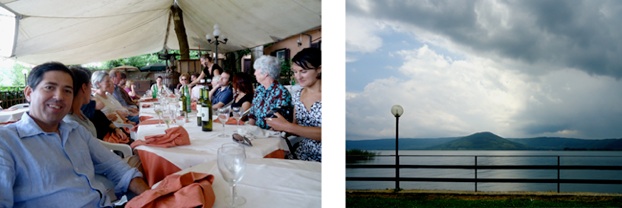
June 17
Had to book to visit The Borghese Gallery - a palatial villa in the Borghese Gardens that houses a massive collection started by the cousin of a Pope in the early 17th century. The audio guide informs that its ancient works have been “restored” to replace the bits that were missing. One ponders the ethics of creative re-constructions, and how much this plays a part in our understanding of Rome.
The Bernini sculptures were the star attraction. The yielding flesh of its figures, their kinetic motion, and lightness appear to transcend the limiting characteristics of the marble they are carved from.
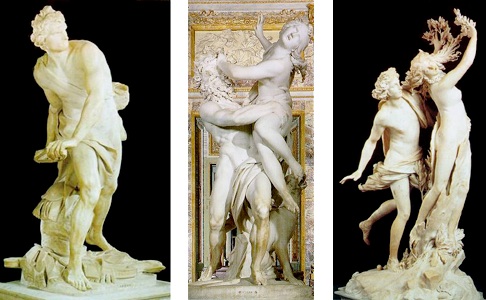
Photo: Bernini’s David, Pluto and Proserpina, and Apollo and Daphne.
This baroque dynamism is countered by the classical restraint of Canova’s sculpture of Pauline Boneparte. The sister of Napoleon married into the Borghese family and is shown holding an apple evoking the story of Aphrodite whose beauty won her the golden prize.
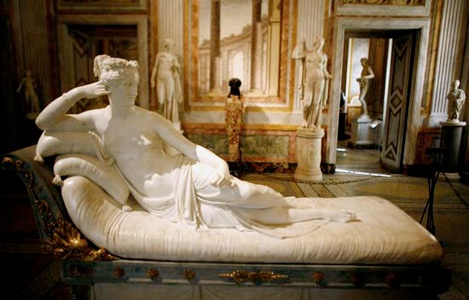
Photo: Canova, Pauline Bonaparte as Venus Victrix
A self portrait in the picture gallery proved that Bernini could paint as well as sculpt.
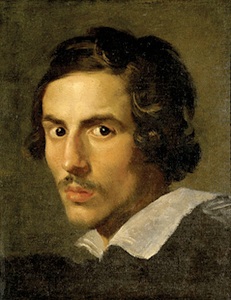
Photo: Self-Portrait as a Young Man by Gian Lorenzo Bernini, 1623
An early painting from Titian places a cupid between two female figures representing Sacred and Profane Love. The classical beauty of the bride holding a vase of earthly jewels, and the sensual representation of the mythical Venus with her sacred flame seem designed to display something of the other in each.
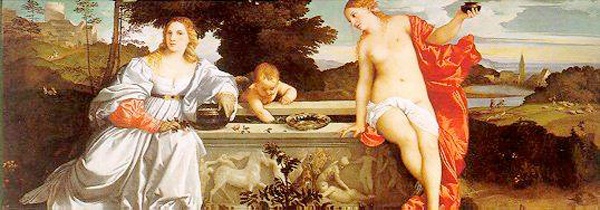
Photo: Titian, Sacred and Profane Love (c. 1514) Oil on canvas, 118 x 279 cm.
There were several paintings by Caravaggio, including his famous Boy with a Basket of Fruit.
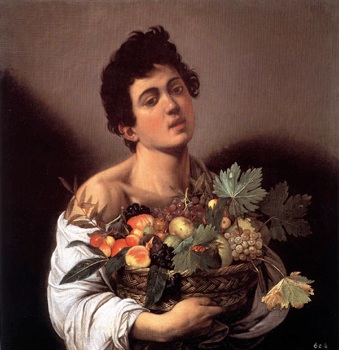
Photo: Caravaggio, Boy with a Basket of Fruit, 1593. Oil on canvas, 70 x 63 cm.
Raphael’s Deposition depicts the active transportation of the body of Christ to the tomb. Rubens painting on the same theme seems to emphasise the suspended state between life and death, the fleeting effect of light and more tangible sculptural form. The diffused glow that one associates with Titian is contrasted against Caravaggesque darkness.
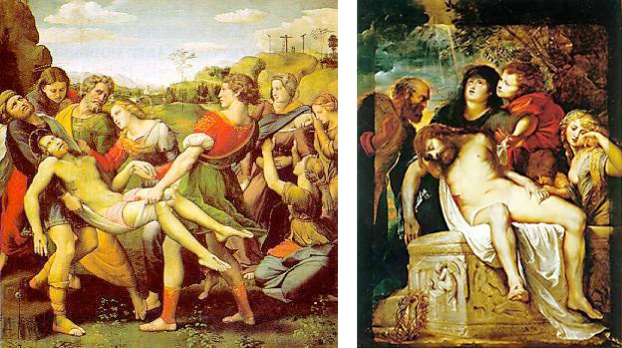
Photo: The Deposition by Raphael, 1507 (left) and Pieter Paul Rubens, 1602. (right)
I was disappointed to only get half way through the picture gallery when the two hour session ended.
June 18
Visited the neoclassical Palazzo Braschi which had paintings on display by lesser known artists, then wandered down to the Forum Boarium, the oldest market located next to the first bridge that crossed the river at the Tiber Island...

Photo: The Temple to Hercules, one of the earliest marble structures at the oldest forum in Rome.
...before heading on to the Circus Maximus, the Roman race track, behind which the ruins from the Palatine Hill rise.

Photo: The Circus Maximus
June 19
Katherine, a Canadian architect, has been documenting a district in the south west, famous for its modernist architecture, and allowed me to join her on a crack of dawn excursion. The area known as EUR, (Esposizione Universale Roma) was originally designed as the site for the 1942 World Fair and to celebrate Musolini’s fascist regime, before WWII intervened. Its imposing and austere structures fuse rationalism with ancient Roman design and materials, i.e. tuffa, travatine, and marble. It reminded me of Canberra.

Photo: Pillared approach to the Museum of Roman Civilisation, EUR.

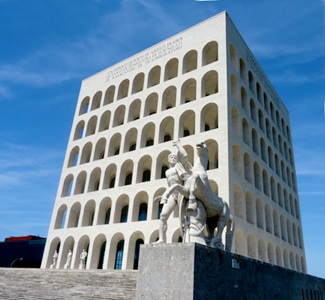
The church of St Peter and St Paul is built on an artificial hill. (It reminded me of the War Memorial in Canberra.)
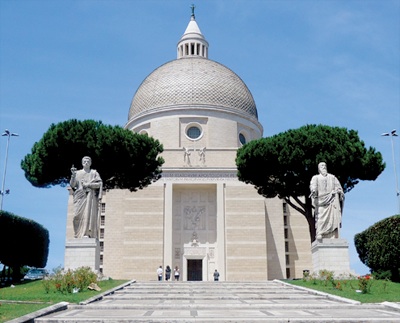
Photo: San Pietra e San Paolo, EUR.
A neon halo hangs over the congregation, and a circle of lights surround the Virgin making her look like Our Lady of the EU! Even the candles have been replaced by electric simulations activated by coins dropped by petitioners in its slot. Very strange!
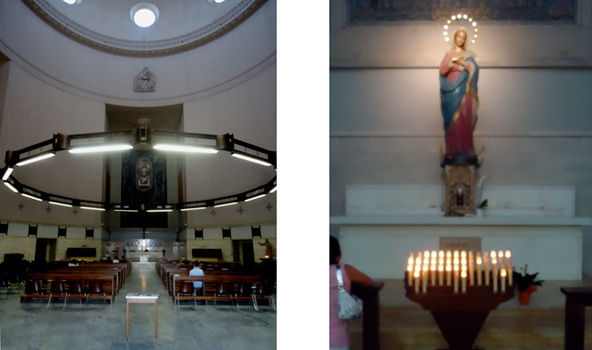
Photo: San Pietra e San Paolo, EUR.
Next door to the EUR district is Garbatella, a housing estate also built built under Mussolini’s rule, but with a very different flavour.
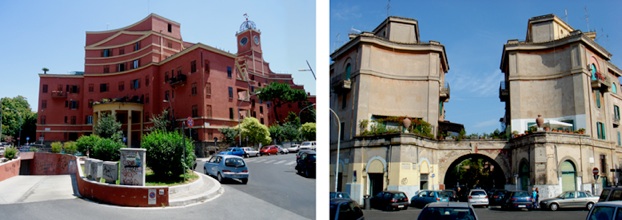
Photo: Garbatella.
Much of it is the work of one architect, yet each structure is unique, combining older styles and grouped together around common yards, with the effect of providing “villas” for the people.
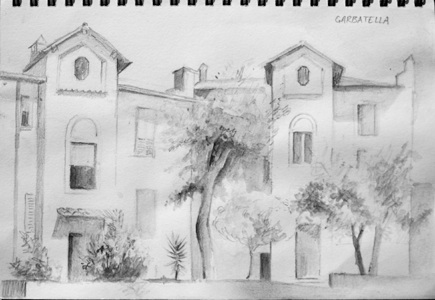
Photo: Garbetalla. Plein air charcoal wash sketch.
June 20
Returned to the Forum and looked for fresh perspectives around the less traveled perimeter.


Went on to the Baths of Caracalla in the south west, forgetting that they are closed on Mondays. Decided to continue walking, but headed east.
Passed a priest on a bike...
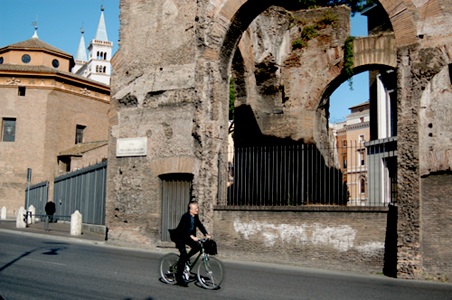
Followed the path of the Aqua Felice...
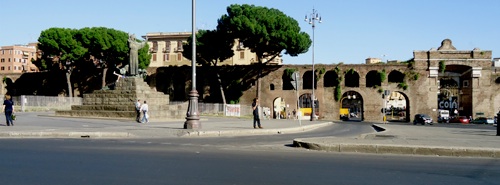

Down to Porta Maggiore...
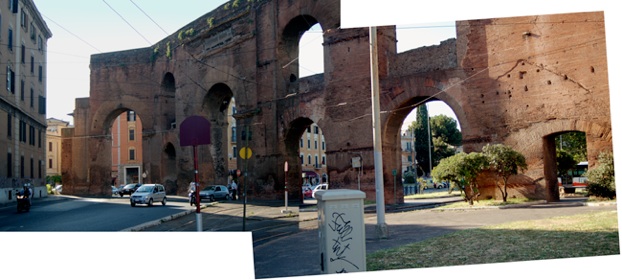
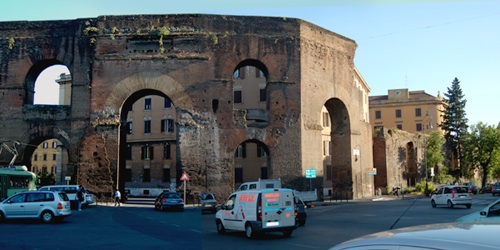
Checked out my favourite overpass nearby...
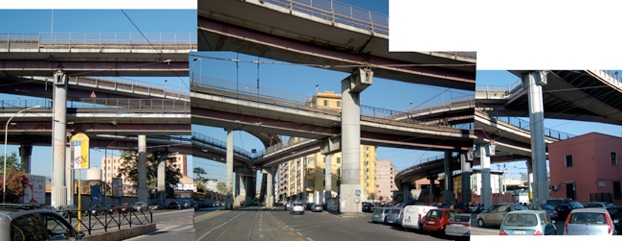
Photo: The Tangenziale EST near Porta Maggiore.
And followed it down to San Lorenzo.
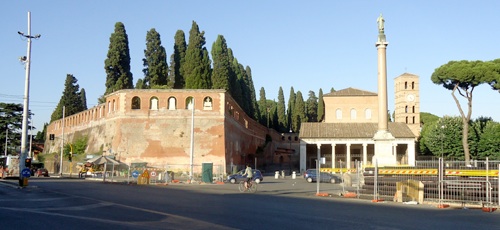
... Before catching the wrong bus home.
Enjoyed the scenic tour even if it got me back to the BSR an hour after dinner.
June 21
There are so many marble statues in Rome that some have been relegated to storage in a decommissioned power station. The juxtaposition between classical figures and industrial machines has been recognised as an attraction in itself at Centrale Montimartini and opened to the public. I found the fact that oil turbines had been installed on elegant mosaic floors just as surprising.
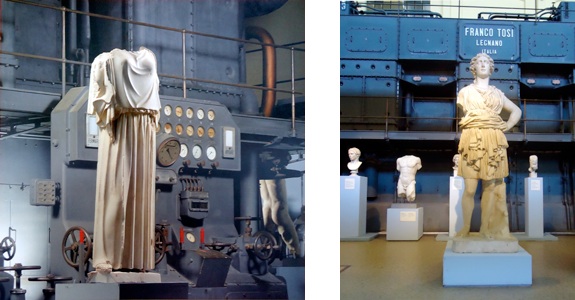
Photos: Centrale Montimartini.
I appreciated the gritty aspect of this industrial side of town.
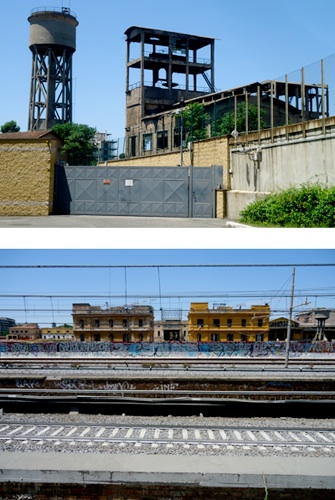
Photos: Industrial area around Centrale Montemartini.
Next to Rome’s main rail terminus is one of the buildings that is part of the National Museum of Rome. It is called Palazzo Massimo, not to be confused with another Palazzo Massimo, that I visited on the other side of town first! This museum was once a Jesuit monastery but now houses some of the most beautiful paintings, mosaics and sculptures of the Roman age.
A collection of busts dating back to the 2nd century BC reveals two approaches to portraiture. Some continue the Greek tradition of idealisation. Others depict the individual characteristics of the sitter with startling realism.
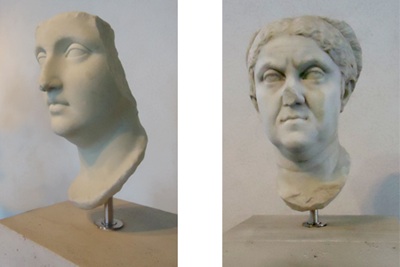
Photo: The ideal and the truth in Roman portrait busts, at the Museo Nazionale Romano.
The top floor of the museum includes a garden fresco that covered an entire room from the Villa of Livia (wife of Augustus) before being relocated to the museum.

Photo: Wall painting from the Villa of Livia near Primaporta, c. 30 B.C. Museo Nazionale Romano.
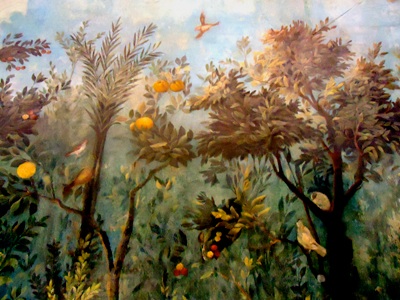
Photo: Fresco detail. Can you believe this is over 2040 years old?
The same floor includes other frescoes in reconstructed rooms from the Augustian era.
Faux architectural elements expand a bedroom space and frame views through simulated windows, with paintings of paintings and of sculptural forms decorating the room. The parts are related in a symmetrical design with the overall effect of a geometric collage.
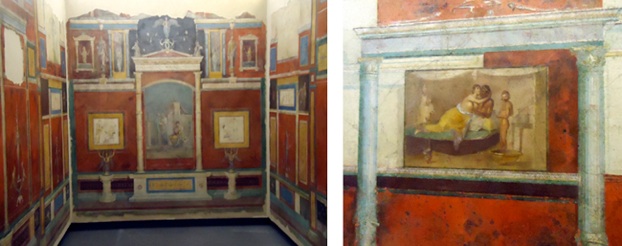
Photo: Bedroom frescoes from Villa of Farnesina with detail representation of intimacy.
One of the simulated paintings depicts an amorous scene. The man is shown as darker while the woman wears brightly coloured garments with servants attending.
A winter dining room was painted black, apparently to retain heat and to cope with the soot from the fire. Delicate landscapes painted on the dark background include cityscapes, with buildings arches and gateways, and rural scenes, with huts, animals and rustic shrines. Slender columns divide the long wall into panels that are joined together by ivy, with caryatids crowning the capitals. Colourful figures enact popular tales in a narrow frieze above the panels, while a geometric design below, resembling an architects plan, links the wall with the design on the mosaic paving on the floor.
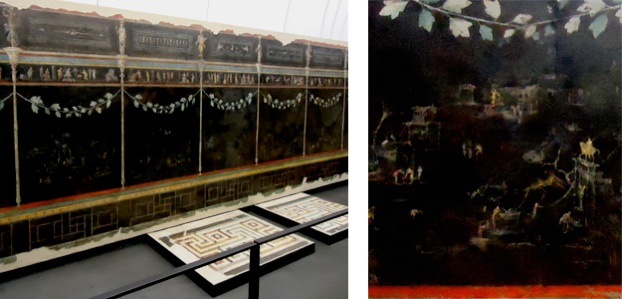
Photo: Fresco from triclinium (dining room with three couches) from Villa of Farnesina.
The interweaving elements would suggest a concern for complex relationships in which architecture is an element in the natural world, the frame for the drama of human culture, a metaphor for man himself, and a manifestation of a more abstract geometry.
The theme of living in harmony with nature is a recurring theme.

Photo: Fresco detail from Villa of Farnesina.
This picture seems to illustrate a passage from Pliny who names an artist he attributes with “inventing” Roman landscape painting:
“Studius, from the time of deified Augustus first invented a very charming style of wall painting:
villas and porticos, gardens, woodlands and sacred groves, hills, fishponds, canals, rivers,
beaches, whatever anyone wanted. And there are people represented in these landscapes,
travellers, sailors, people riding to villas on donkeys or in carriages. Other people are shown
fishing, hunting gathering grapes.” -Pliny, Natural History XXXV, 116.
Some of the frescos minimise the illusionistic content, with a flatter geometric design.
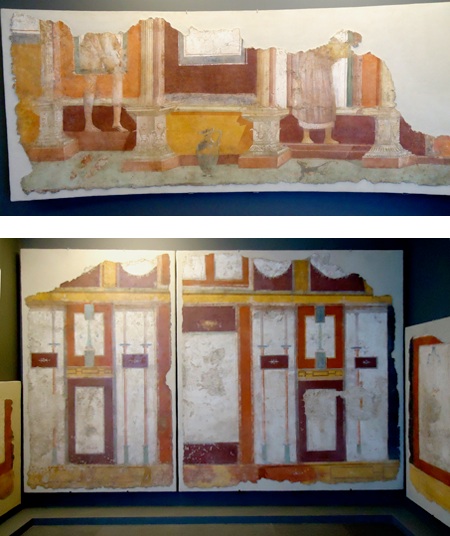
And with a more linear emphasis...
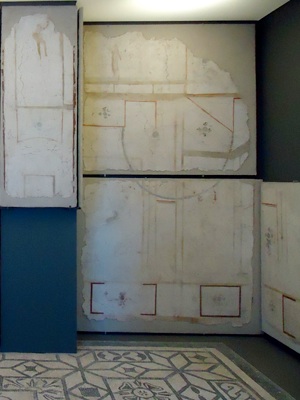
Photos: Roman wall painting, Palazzo Massimo, Museo Nazionale Romano.
A modernist might view the more abstract design as a progression. This appears to be true when looking at the first three stages of Roman wall painting. Geometric painting is located in the third stage after the first two that deal with simulating veneer finishings and small scale tromp l’oel images. The fourth stage, however, incorporates geometric elements within more encompassing illusionary images. This would indicate the bedroom and triclinium frescoes come after the geometric period.
The pleasant aspects of country life appear in frescoes lining a columbarium, where niches contain the ashes of the dead.
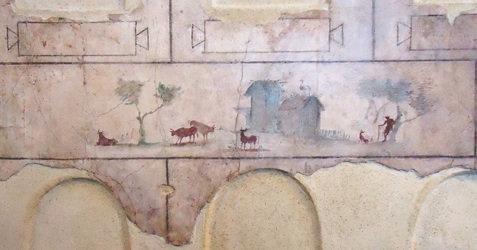
Alongside the less pleasant....
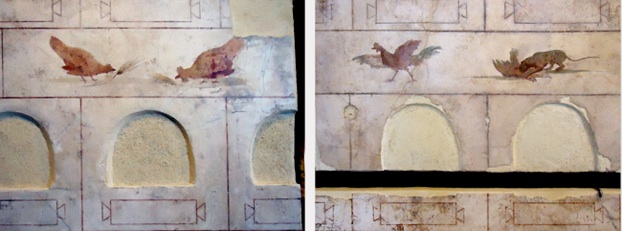
Perhaps presenting the cycle of life and death as a natural process...
The purpose of this nymph doing a poo in a pond with hippos and water birds is less certain...
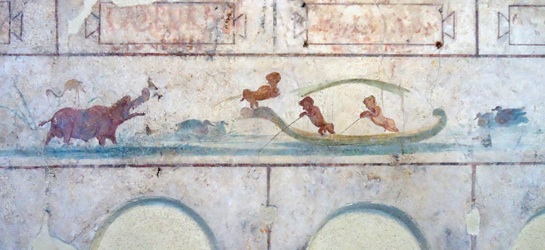
Perhaps shit happens and even the best of us have to go!
The Rome Fellow, Peter Fane-Saunders presented a fascinating evening lecture on The Septizonium, a three tiered facade built by Emperor Septimius Severus in the 2nd century at the southern end of the Circus Maximus. Peter described how its ruined state and disputed function resulted in architects trying to resolve the full design and then adopting the same as the basis for a couple of significant Renaissance buildings. It’s interesting that a lost structure became the catalyst for rationalising and internalising an order that generated new structures, and to ponder whether this would have happened if the Septizonium had remained fully preserved.
